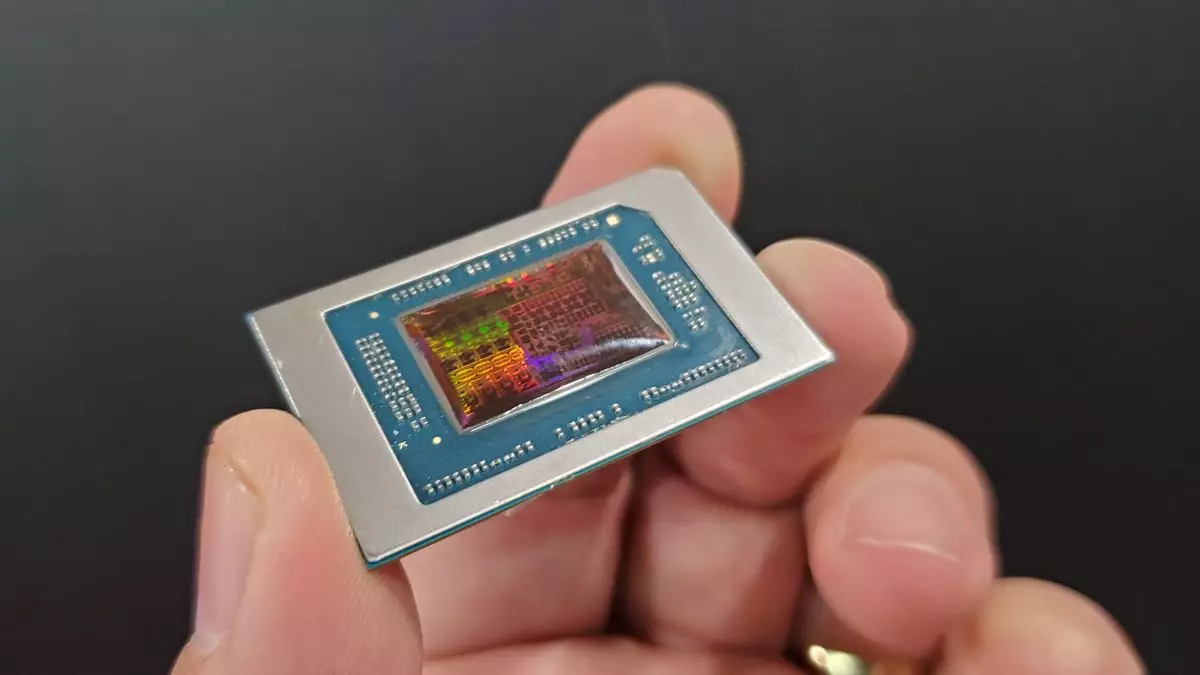The AMD Strix Point APU is poised to redefine the landscape of portable computing. As the demand for powerful yet compact processors surges, AMD’s latest offering stands out with substantial capabilities that appeal to both gamers and casual users alike. Incorporated into high-end laptops and handheld PCs, such as the Razer Blade 16 and the OneXPlayer OneXFly F1 Pro, it’s evident that Strix Point isn’t just a fleeting moment of brilliance but a significant enhancement to how we view compact computing.
The prospect of this APU moving into the desktop realm seems not only plausible but highly exciting. Reports indicate AMD aims for a Q4 2025 release of the desktop variant, expected to be branded as “Ryzen 9000G.” With such advancements, AMD is likely to strategically incorporate AI features, hinting at a possible name change to “Ryzen AI 9000G.” This demonstrates AMD’s commitment to evolving beyond traditional boundaries, injecting intelligence into hardware performance.
A Closer Look at Strix Point Specifications
What makes the Strix Point APU truly remarkable is its impressive architecture. Featuring up to 12 cores, composed of four full Zen 5 cores and eight compact Zen 5c cores, this chip is engineered to balance power and efficiency. Coupled with 16 RDNA 3.5 graphics compute units and an AI-accelerating neural processing unit (NPU) rated at 55 TOPS, Strix Point offers a formidable performance package.
The anticipation around these specifications is valid; they promise robust performance for various applications, from productivity tasks to lightweight gaming. While the current focus remains on the laptop and handheld markets, transplanting Strix Point into the desktop ecosystem opens a new frontier for budget-conscious builders and tech enthusiasts alike.
Integration and Compatibility: A Seamless Transition
Strix Point is designed for integration with the AM5 socket, which means existing AMD-compatible motherboards can easily welcome this APU. Existing lines, such as the Ryzen 8000G series, provide a context for potential performance improvements. The Ryzen 7 8700G and Ryzen 5 8600G showcase the capabilities of previous generations with solid Zen 4 cores paired with RDNA 3 graphics. With Strix Point entering the mix, users can expect even higher clock speeds and efficiency, further solidifying AMD’s reputation in the industry.
While raising expectations, it is essential to note that while Strix Point is ideal for compact systems, pairing it with a discrete GPU could deliver the quintessential gaming experience. However, this combination may dilute the core aim of creating a mini PC that functions efficiently as a powerful all-rounder rather than a top-tier gaming machine.
Applications in Mini PC Markets
Considerations around Strix Point go beyond just specifications; they delve into practical applications, particularly in the burgeoning mini PC market. The introduction of chips like Strix Point makes a compelling case for products such as the Ayaneo Retro Mini PC AM01S, a device designed for enthusiasts craving compact computing solutions without sacrificing power.
In a world where space and portability increasingly dictate technology preferences, Strix Point offers a unique proposition. It strikes a balance, providing sufficient horsepower for day-to-day tasks and light gaming while fitting snugly into small form factors. This is a crucial advantage as more consumers seek alternatives to traditional, bulky desktop setups.
Pricing and Market Expectations
While speculation and anticipation surround the Strix Point desktop version, discussions regarding its pricing remain just that—speculative. Mobile variants, such as the Ryzen AI 9 HX 370, often carry a premium, suggesting that the desktop iteration of Strix Point could provide a more cost-effective solution for enthusiasts seeking affordable power. Without official announcements, however, consumers must tread carefully, awaiting comprehensive details.
The eventual release of Strix Point APUs in the desktop space promises to take performance to new heights. As AMD continues to innovate and adapt to market demands, the future shines brightly for Strix Point, revealing endless possibilities in the realm of compact computing. In the rush of digital advancement, one thing is clear: AMD isn’t just participating in the evolution; they are spearheading it.

